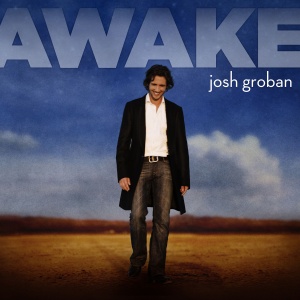I think most of us can agree that Josh Groban became a household name after his song “You Raise Me Up” achieved tremendous popularity. Even though it was released nine years ago, Groban still remains unparalleled in his unique brand of operatic pop. Two years later, in 2005, he released his third studio album, entitled Awake. Despite having received groundbreaking recognition for Closer, the previous release, he managed to maintain his strong reputation with the addition of Awake. This album contains everything about the Josh Groban package that makes it desirable – the stunning orchestral arrangements, the spice of international influences, and of course the silky, rapturous voice of the man himself. Not only does he live up to his name with this album, but he also shows that he has an eagerness to continue his musical development.
Although every song on Awake stands out as its own distinctive composition, the one unifying factor between all of them is the smooth clarity of the vocals. At times you may actually find yourself thinking that an angel is residing in your head, relaxing your mind with its soothing tone. Angel or not, the message of this album rings true; music from all corners of the world can come together to create a beautiful product. Each culture has given birth to its own individual form of musical expression, and Groban has seen the opportunity in combining them into a greater whole. One minute you are walking down a windswept alley in the streets of Barcelona, while another you are dancing in the villages of South Africa, but always there remains the familiar presence of your melodious guide.





